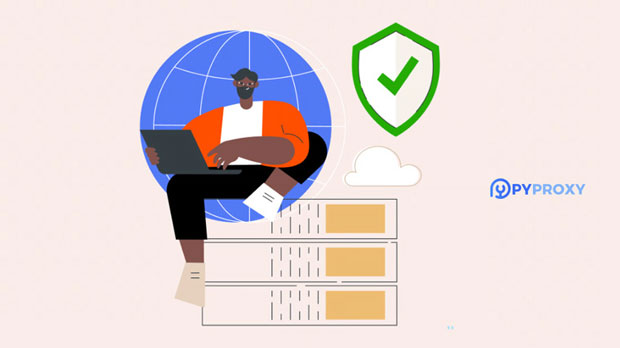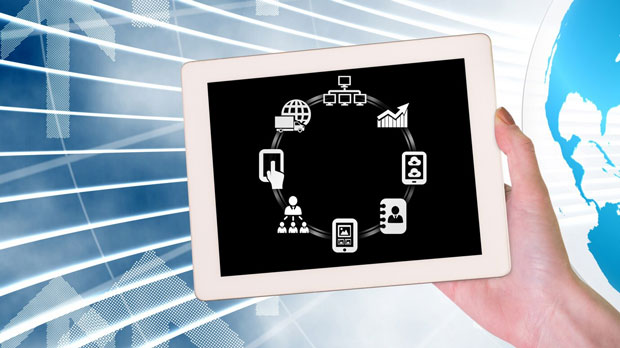What is the use of proxy server IP in digital marketing and advertising?
In the digital marketing and advertising industry, proxy servers play a significant role in enhancing efficiency, targeting capabilities, and privacy. These servers act as intermediaries between users and the websites they visit, allowing marketers to access location-specific data, bypass geo-restrictions, manage online ads, and track competitors. proxy ips are also useful in web scraping, ad verification, and improving security measures. This article delves into the various applications of proxy servers in digital marketing and advertising, offering insights into how businesses leverage them for better decision-making, effective campaign management, and overall growth. The Role of Proxy Servers in Data Collection and Web ScrapingOne of the most prominent applications of proxy servers in digital marketing is data collection. Companies often rely on web scraping to gather market intelligence, consumer behavior data, competitor analysis, and price monitoring. Proxy servers are crucial in this process because they allow users to mask their IP addresses and avoid detection from websites. Without proxies, scraping large volumes of data could result in IP bans, limiting access to valuable information.Proxy servers can rotate IP addresses, ensuring that the same IP is not used repeatedly during scraping sessions, thus reducing the risk of being blocked by target websites. This enables businesses to collect real-time data on competitors’ pricing strategies, stock levels, product launches, and other relevant information that can inform their own marketing campaigns and product strategies. Furthermore, proxies allow marketers to access region-specific data that may otherwise be restricted due to geo-blocking.Geo-Targeting and Ad Campaign ManagementProxy servers provide significant advantages in the realm of geo-targeting, a critical component of online advertising. Geo-targeting allows marketers to serve relevant ads based on a user’s location. This enhances the effectiveness of ad campaigns, particularly when promoting products or services tied to specific geographical areas. However, certain digital platforms may limit access to region-specific content based on IP address location. Proxy servers can circumvent these restrictions by simulating access from different regions, enabling businesses to tailor ads to users in various locations.For instance, a global marketing campaign can be tested by simulating visits from different countries, allowing businesses to analyze the performance of ads across various markets before launching full-scale campaigns. Additionally, proxy servers help marketers optimize ad placement and performance, ensuring that ads appear as intended to their target audience, regardless of geographic location.Ad Verification and Fraud PreventionAd fraud is a growing concern in the digital marketing landscape, with many companies falling victim to click fraud, impression fraud, and other deceptive practices. Proxy servers play a vital role in ad verification, allowing businesses to monitor and verify that their ads are being displayed correctly and are not subject to fraud. By using proxies, marketers can access and audit ads from different IP addresses to ensure they are visible to real users rather than bots or fraudulent actors.Proxies also allow businesses to check whether ads are being shown on the right websites or apps and whether the targeting criteria are met. If an ad is displayed in a fraudulent context or on a non-relevant site, it can waste the marketing budget and reduce the campaign’s ROI. Proxy servers provide the necessary anonymity and location flexibility to carry out comprehensive ad audits and fraud prevention efforts.Competitor Analysis and Market ResearchUnderstanding competitors’ strategies is key to staying ahead in the digital marketing game. Proxy servers enable businesses to gather intelligence about their competitors’ online activities without revealing their identity. By using proxies to monitor competitor websites, digital ads, social media campaigns, and product offerings, marketers can gain valuable insights into pricing models, promotional tactics, and customer engagement strategies.For example, a company can monitor competitor websites for price changes or track their advertising strategies on social media platforms. proxy ips provide the anonymity needed to perform these actions without alerting competitors to the analysis being conducted. This makes proxy servers an essential tool for gaining a competitive edge in the market.Improving Security and Protecting PrivacyIn addition to enhancing marketing strategies, proxy servers also provide improved security and privacy protection. Digital marketers often deal with sensitive data, including customer information, transaction details, and internal strategies. Using proxies adds a layer of security by masking the original IP address, thus making it harder for malicious actors to target the marketer’s infrastructure or track their activities online.By routing traffic through proxies, businesses can prevent cyber threats like DDoS attacks, identity theft, and data breaches. This is particularly important when engaging in large-scale ad campaigns, scraping operations, or competitor analysis, where the risk of cyberattacks is higher. With proxies, businesses can operate more securely and maintain customer trust.Cost Efficiency in Digital Marketing OperationsAnother benefit of using proxy servers in digital marketing is the potential for cost savings. By enabling efficient data scraping and competitor analysis, proxies help businesses make more informed decisions without having to rely on expensive third-party data sources. Marketers can gather valuable information autonomously and quickly, reducing the costs associated with outsourcing these tasks.Moreover, by utilizing proxies for ad verification and fraud prevention, businesses can ensure that their marketing budgets are being used effectively. Ad fraud can lead to significant financial losses, and proxies provide a cost-effective way to safeguard advertising investments. Additionally, proxies help businesses optimize their ad campaigns in real-time, which leads to better ROI and overall cost efficiency.ConclusionProxy servers are an essential tool in the world of digital marketing and advertising. From enhancing data collection through web scraping to improving geo-targeting, ad verification, and competitor analysis, proxies provide numerous benefits that help businesses stay competitive and optimize their marketing strategies. By utilizing proxies, marketers can access restricted data, protect their privacy, ensure accurate ad placement, and prevent fraud, all while achieving greater cost efficiency. As the digital landscape continues to evolve, the use of proxy servers will remain a vital component of any successful digital marketing and advertising campaign.
2025-02-03

























































